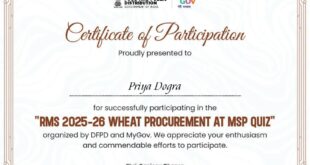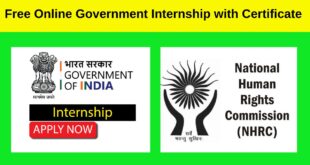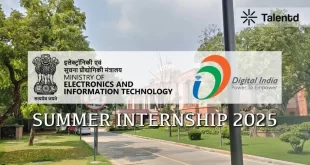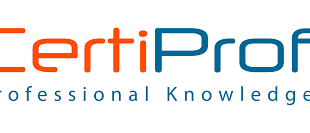ISO/IEC 20000 IT Service Management Associate™ SkillFront Certification Exam Answers
The Skills You’ll Learn:
- Chapter 1. Why Does ISO/IEC 27001 Matter?
- Chapter 2. The value of implementing service management.
- Chapter 3. How does ISO/IEC 20000 function?
- Chapter 4. Core concepts of ISO/IEC 20000.
- Chapter 5. ISO/IEC 20000 Step-By-Step Implementation Guide.
- Chapter 6. ISO/IEC 20000 IT Service Management Systems Framework.
- Chapter 7. ISO 20000 – Roles And Responsibility In Organizations.
- Chapter 8. Why Understanding Roles is Critical to the Service Management Program?
- Chapter 9. Five Typical Roles and Responsibilities.
- Chapter 10. ISO 20000 Service Management Systems Associate.
- Chapter 11. ISO 20000 Service Management Systems Internal Auditor.
- Chapter 12. ISO 20000 Service Management Systems Lead Auditor.
- Chapter 13. ISO 20000 Service Management Systems Lead Implementor.
- Chapter 14. ISO 20000 Service Management Service/Support Desk Manager.
100% FREE ISO/IEC 20000 IT Service Management Associate™ includes
- CERTIFICATION: ISO/IEC 20000 IT Service Management Associate™
(USD 199.- Value) - BONUS PROGRAM E-BOOK: 80 Pages
(USD 97.- Value) - BONUS PROGRAM AUDIOBOOK: 1 Hour, 10 Minutes, 33 Seconds
(USD 50.- Value) - SHAREABLE & VERIFIABLE DIGITAL BADGE: Your Name Engraved On It, Custom Made For You
(USD 99.- Value)
ENROLL Now: ISO/IEC 20000 IT Service Management Associate™ SkillFront Certification Exam
For Updates Regarding Exam Answers Join My Whatsapp Group
Check This Out:
Certified Associate In Scrum Fundamentals Exam Answers – SkillFront Exam Answers
Foundations Of Business And Entrepreneurship Exam Answers – SkillFront Entrepreneur Program Exam Answers
Information Security Associate Exam Answers – SkillFront Exam Answers
ISO 9001 Quality Management Systems Associate™ Skillfront Certification Exam Answers
ISO/IEC 20000 IT Service Management Associate™ SkillFront Certification Exam Answers
QUESTION 1: What is a benefit when your organization implements a service management system?
- A more standardized way of providing services brings greater ease of operation.
- Lower operating costs due to greater efficiency.
- Increased customer satisfaction due to an enhanced service experience.
- All the choices above.
QUESTION 2: What is a core concept of ISO/IEC 20000?
- Preventive Action.
- Documented information.
- Management responsibility.
- All the choices above.
QUESTION 3: Who has responsibility for continual improvement?
- Quality experts only.
- All employes.
- Management only.
- The customer.
QUESTION 4: What is a benefit to an organization when the services are delivered according to ISO/IEC 20000?
- The organization behaves in a socially responsible way.
- The environmental needs of the employees are cared for.
- The organization is more customer-focused.
- The organization has fewer suppliers to deal with.
QUESTION 5: There is a system of continuous improvement. It is a cycle. Which four activities does this system involve?
- Plan-Do-Check-Act.
- Plan-Perform-Evaluate-Act.
- Plan-Do-Evaluate-Act.
- Plan-Perform-Audit-Improve.
QUESTION 6: What can be improved by achieving quality objectives?
- Relationship with the employees.
- Personal satisfaction of the Management.
- Effectiveness of the service.
- Relationship with interested suppliers.
QUESTION 7: Which Step is included in the Implementation Guide of ISO/IEC 20000?
- Define Processes and Procedures.
- Get Management Support.
- Choose a reasonable Certification Body.
- All the choices above.
QUESTION 8: Why is the Step-By-Step Implementation Guide essential?
- The 13 steps are needed to help the organization for the implementation and preparation for certification.
- It helps the organization to implement the ISO 20000.
- It gives your service organization and its stakeholders a clear overview of what to do and what to expect.
- All the choices above.
QUESTION 9: Which one is a Service Management Process?
- Control Processes.
- Service Delivery Processes.
- Relationship Processes.
- All the choices above.
QUESTION 10: What is a Configuration Baseline?
- The change requests allocated to a release.
- A snapshot of the state of a service or individual configuration items at a point in time.
- A configuration audit report.
- A benchmark of the service provider’s capability.
QUESTION 11: What should be included in a document of the ISO/IEC IT Service Management System Framework?
- Service level agreements and contracts.
- Policy statements.
- Plans and procedures.
- All the choices above.
QUESTION 12: Which process or function is responsible for supplying first-line support and assistance in IT services’ daily use?
- Service Desk.
- Incident Management.
- Service Level Management.
- None of the choices above.
QUESTION 13: What is the task of an ISO/IEC 20000 Company Management?
- Ensures that customer requirements are determined and are met with the aim of improving customer satisfaction.
- Has established service management policy, objectives, and plans.
- Manages risks to the service management organization and services.
- All the choices above.
QUESTION 14: What may define the scope of the Service Management in the Service Management plan?
- The size of the infrastructure.
- The number of staff.
- The location of the services.
- All the choices above.
QUESTION 15: Which of the following is an ISO/IEC 20000 requirement relating to the service management plan?
- It must never include any know-how of the organization.
- It must be available in at least one hard copy.
- It must include the scope of the organization`s service management plan.
- None of the choices above.
QUESTION 16: While planning for service improvements, what is an important best practice to consider?
- The service improvement targets should not change until the target is reached.
- An independent project manager should monitoring the progress so that objectivity can be maintained.
- The service improvement targets should be measurable, linked to business objectives, and documented in a plan.
- None of the choices above.
QUESTION 17: What is the aim of an internal audit?
- To monitor employee performance.
- To ensure and improve one`s quality capability.
- To instruct all employees that quality-related requirements must be observed.
- To verify if the defined key performance indicators are determined.
QUESTION 18: Which is an activity for continual improvement that an ISO/IEC 20000 Company should perform?
- Set targets for improvements in quality, costs, and resource utilization.
- Measure, report, and communicate the service improvements.
- Ensure that all approved actions are delivered and that they achieve their intended objectives.
- All the choices above.
QUESTION 19: What should be considered while planning for a new or changed service?
- The existing service levels.
- The verification that the appropriate level of testing is completed.
- A complete review of all recent security breaches.
- Known Errors to file systems.
QUESTION 20: During an audit, the evidence is required for Service Management policies, plans, and procedures. Who should ensure that this evidence is available?
- The Business Relationship process owner.
- The Auditor.
- The Senior responsible owner.
- The Service Level Manager.
QUESTION 21: What does Service reporting in the Service Delivery Process include?
- Satisfaction Analysis.
- Trend information.
- Workload characteristics, e.g., resource utilization, volume
- All the choices above.
QUESTION 22: What is a best practice for Capacity Management?
- The Service Catalog should be maintained and kept up-to-date.
- A Capacity plan, which is documenting the actual performance and the expected requirements, should be produced at least annually.
- The resilience of the infrastructure components should be measured and included in the Capacity Plan.
- None of the choices above.
QUESTION 23: Problem Management activities analyze historical incidents and problem data held in the Configuration Management Database to understand trends. Which aspect of Problem Management accomplishes this?
- Problem Control.
- Error Control.
- Proactive Problem Management.
- Identification of root causes.
QUESTION 24: What is a Known Error?
- A Problem that cannot be matched.
- A Problem for which the cause and Workaround have been identified.
- A serious incident whose resolution is known.
- A Problem that is resolved.
QUESTION 25: Through which process does the implementation of new or changed services, including the closure of a service, need to be planned and approved?
- Change Management.
- Service Level Managemnet.
- Business Relationship Management.
- Release Management.
QUESTION 26: A Release policy needs to be documented and agreed upon. What must be included in the Release policy?
- The Release dates.
- The analysis of the success or failure of.
- Release Requests for Change.
- The frequency and type of Releases.
QUESTION 27: There is a strict behavioral guideline for an ISO internal auditor when he is performing his duties. Which one is a behavior?
- Fair and impartial treatment of relevant personnel.
- Independent, unbiased auditing.
- Objective assessment of solid pieces of evidence.
- All the choices above.
QUESTION 28: Problem Management is responsible for carrying out trend analysis of incident volumes and types. What is the reason for this?
- To be able to provide reports to Management.
- To prevent the repetitive occurrence of incidents.
- To provide input to the Capacity Database.
- None of the choices above.
QUESTION 29: Who should always be informed in case a release is delayed, rejected, or canceled?
- The senior management representative.
- Business relationship management.
- Change Management.
- Incident management.
QUESTION 30: According to ISO/IEC 20000, the use of suppliers to provide aspects of the Service Management processes is acceptable. What level of the supply chain must the service provider manage?
- All relationships between lead and subcontracted suppliers.
- Only as agreed in the contracts between the various parties.
- Only the subcontractors as the lead supplier is integral to the service delivery and self-managing.
- Only the relationship between the lead supplier and service provider.
 Priya Dogra – Certification | Jobs | Internships
Priya Dogra – Certification | Jobs | Internships



